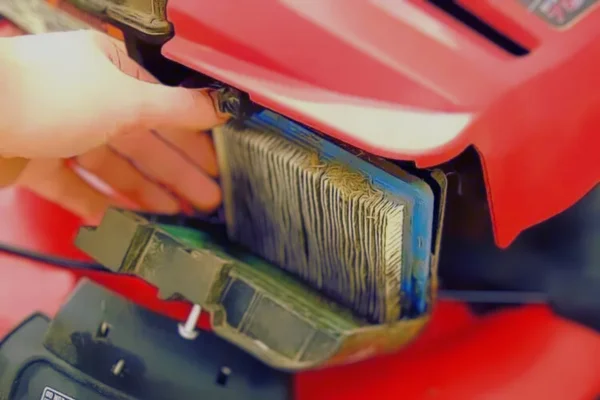If you are experiencing problems with your lawn mower, such as it not starting or running rough, the voltage regulator may be the culprit. A bad voltage regulator controls all sorts of issues with your mower. In this guide, we will show you how to test a voltage regulator on a lawn mower. I will also provide some tips on how to fix a bad voltage regulator.
What is a voltage regulator and why is it important on a lawn mower engine?
A voltage regulator is a device that regulates the voltage in an electrical circuit. It is important on a lawn mower engine because it helps to ensure that the correct amount of voltage is supplied to the spark plugs. If the voltage is too high or too low, it can cause problems with the engine.
There are multiple types of voltage regulators but their working principle is almost the same. To check any voltage regultor you need a digital multimeter. Keeping in mind this I have made a list of 10 best multimeter for home use.

Common symptoms of a bad voltage regulator
There are a few common symptoms that you may notice if your voltage regulator is going bad. These include:
- The engine not starting
- The engine running rough
- Spark plugs fouling
- Dead battery
- Low battery voltage
- Faulty alternator
- Faulty wiring
- Battery terminals loosing
Read more about: How to Test a Well Pressure Switch?
How to test a voltage regulator
There are a few ways that you can test your voltage regulator. We will go over two of the most common methods below.
Method one: Use a multimeter
This is the most accurate way to test your voltage regulator. You will need to set your multimeter to the “DC volts” setting and then touch the leads to the two terminal posts on the voltage regulator. If the reading is higher than 15 volts, then your voltage regulator is bad and needs to be replaced.
Method two: Use a test light
This method is not as accurate as using a multimeter, but it will still give you a good idea if your voltage regulator is bad. Simply touch the lead of the test light to the positive terminal post on the voltage regulator and then touch the grounding clip to a metal part of the engine. If the test light illuminates, then your voltage regulator is bad and needs to be replaced.
How to fix a faulty voltage regulator?
If you have determined that your voltage regulator is bad, there are a few things that you can do to fix it.
Option #01: Replace the voltage regulator
The first option is to simply replace the voltage regulator. This is the most straightforward way to fix a bad voltage regulator.
Option #02: Clean the voltage regulator
If you don’t want to replace the voltage regulator, you can try cleaning it. This is a bit more of a daunting task, but it is definitely doable. You will need to remove the voltage regulator from the engine and then clean all of the connections with a wire brush. Once you have done this, you can reattach the voltage regulator and see if it is working properly.
Option #03: Bypass the voltage regulator
The third and final option is to bypass the voltage regulator. This is a more advanced fix and should only be attempted if you are comfortable working with electrical components. You will need to remove the voltage regulator from the engine and then connect the two terminal posts directly to each other. This will bypass the voltage regulator and allow the engine to run without it.
Replacement tips for a voltage regulator on a lawnmower engine
When you are replacing the voltage regulator on your lawn mower engine, there are a few things that you need to keep in mind.
- First, make sure that you get a replacement that is designed for your specific model of lawn mower.
- Second, if you are not comfortable working with electrical components, it is best to take your lawn mower to a professional mechanic.
- Finally, make sure that you test the voltage regulator before you put the lawn mower back into use.
Lawn Mower Maintenance Tips
How to Clean the Air Filter on Your Lawn Mower?
It is important to keep your lawn mower well-maintained if you want it to run properly. One of the most important parts of maintaining your lawn mower is cleaning the air filter.
The air filter on a lawn mower is responsible for keeping dust and debris from entering the engine. Over time, the air filter will become clogged with dirt and debris, which can cause the engine to run less efficiently.

Cleaning the air filter is a relatively simple task that you can do yourself. You will need to remove the air filter from the lawn mower and then clean it with a brush or compressed air. Once you have cleaned the air filter, you can reattach it and start using your lawn mower again.
Read More About: How To Test Lawn Mower Starter With Multimeter?
It is important to note that you should clean the air filter on your lawn mower at least once a year. If you use your lawn mower frequently, you may need to clean it more often.
If your lawn mower is battery powered then do check battery voltage. Because a weak or dead battery can not start your lawn mower. If the dc voltage is lesser than the rated value the machine will not start. I have also made a guide about 7 best household battery testers so you can choose the one which suits you the most.
How to do maintenance of Your Lawn Mower Battery?
Most of the time battery negative terminal starts corroding due to a loose connection of chemical reaction. So make sure to grease the positive and negative battery post properly.
In an electrical system, proper volts are very important. In lawn mowers there is an alternator. The alternator output voltage must be continuous without any glitch. If there are any glitches or missing then check the spark plugs or wiring harness of your machine.
Lawn Mower Testing Guide Conclusion
Testing the voltage regulator on your lawn mower is a relatively simple task that can be done in a few different ways. If you have determined that your voltage regulator is bad, then its better to replace it. Hopefully, this guide has given you a better understanding of how to test and replace the voltage regulator on your lawn mower.
If you enjoyed this article, please share it with your friends or family. Also, be sure to check out our other articles for more great tips and advice.



